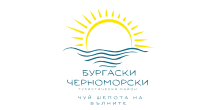The oldest town on the Bulgarian Black Sea Coast. The earliest settlement in the area dates back to the end of the 5th millennium BC. The original name of the city is attested as Antheia. The name was later changed to Apollonia in honour of the ancient Greek god Apollo, patron of emigrants and revered as a healer. To distinguish it from other towns with the name Apollonia that existed at that time (such as Apollonia of Illyria or Apollonia Midroniorum. After the division of the Roman Empire in 395, the region of today's Sozopol fell into the boundaries of the Eastern Roman Empire.
During the reign of Emperor Anastasius (491 - 518), fortified walls were built around the town, which were used in the following centuries and in many places were rebuilt and completed. The 4th-century town is an important stronghold in Constantinople's economic links with the region, located on the seaside road Via Pontica. In 812, during the reign of the Bulgarian Khan Krum, Sozopol entered the borders of Bulgaria, but like the other Black Sea towns, it often returned to Byzantine rule, being conquered for the last time by Todor Svetoslav. During the Middle Ages, it retained its status as a regional and episcopal town. For its establishment as one of the most important Christian centres on the Western Black Sea Coast, the monasteries (St. John the Baptist, Sts. Kirik and Yulita and St. Anastasia on the islands of the same name; St. Nicholas at today's town of Chernomorets and the monasteries in the town – St. John, St. Apostles” and St. Mary) played an important role. In 1366, during the march of Amadeus VI, the Count of Savoy, to the Bulgarian Black Sea Coast (1366 - 1367) the town was captured and sold to Byzantium. In 1453, after a long siege and despite the help of Venetian and Genoese ships, the city fell to the Ottoman Turks.
Today's city is a favourite destination of Bulgarians and foreigners. The resort town offers a variety of accommodation facilities, restaurants, discos, as well as excellent conditions for practicing water sports. If you want to have some fun, dive underwater and explore the sea or have a boat trip. In the town you can see many archaeological monuments. Ancient Sozopol architectural and archaeological reserve, the Thracian fortresses in the area of Bakirlaka, the Thracian burial mounds, the Fortress walls; Museums: Archaeological Museum, House museum of Alexandar Mutafov, Cell school in the village of Rosen and, of course, the autumn cultural festival "Apollonia".
